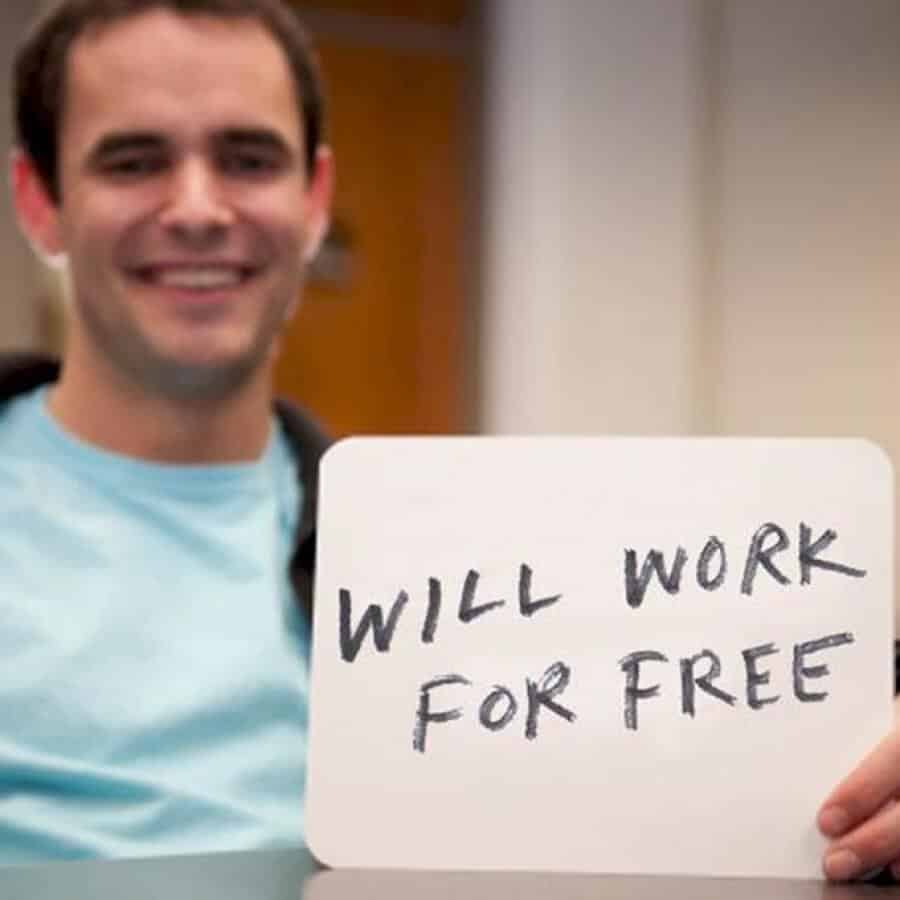Usually we start day on Youth-Time.eu with some interesting opportunities for young people. But today we decided to look at the other side of the coin. “Intern” is the concept which years ago – in the 1960s and earlier – was almost exclusively associated with students of medicine and aspiring doctors. Today we hear this word so often that it looks like we have replaced the word 'job' with it.
Nowadays it is rare to see young people finding a real job right after graduating, instead they endlessly do internships, fellowships and programs to gain experience that will supposedly lead to career employment. But the problem is that in many cases the internship just leads to another internship, and the question is: when is it enough? One analysis by LinkedIn says that more than a quarter of interns progress to a full-time job in the firm where they did their internship (see chart). But this study doesn’t say anything about how many internships went before the one that led to a real job.
When we look through the notices for applications and the requirements for internships, we see that most of them are designed for experienced applicants, with recommendations and certificates from previous employers and mentors. It seems that internships now require work experience, which makes young people wonder from one office to another in the hope of getting a first chance somewhere to start the intern-game.
On the other hand, employers are very happy to have interns, since they are less well paid than regular workers (or in many places totally unpaid) and young, ambitious kids are willing to do everything that is in their power to impress potential employers. So employers change interns every couple of months, and get routine work done well without spending much money. For instance, Google alone is offering around 3,000 internship places per year, while promising the chance to “do cool things that matter”. European Union offices recruit around 1,400 young people twice a year. Deloitte, Ernst & Young, KPMG and PricewaterhouseCoopers employ more than 30,000 interns per year, and these are just some examples. When we see this impressive number of internships, and then look at youth unemployment rates, it is not hard to conclude that far not all of the interns get the chance to reach their goal.
Some countries have tried to change the system in order to protect the interns, introducing laws guaranteeing a minimum wage, which in many cases has had a bit of a counter-productive effect. In the case of Germany, for example, an intern who works more than 3 months is now required by law to get around 1400 EUR, which has caused many employers to cut longer-term internships back to the 3 month cut-off date. In most cases this time has proven to be too little for interns to gain needed experience as well as to demonstrate all their skills to potential employers. It remains to be seen how this is going to impact the youth unemployment rate in Germany, which is currently very good in comparison with other EU countries.
Youth unemployment is the unemployment of young people between 24 and 28 years old as defined by the United Nations. An unemployed person is defined as someone who does not have a job but is actively seeking work. In order to qualify as unemployed for official and statistical measurement, the individual must be without employment, willing and able to work, of the officially designated ‘working age’ and actively searching for a position. In recent years young adults have accounted for up to 40% of the world’s unemployed, with a global unemployment rate of roughly 13%, or around 75 million young people, and this number is set to rise, according to a report from the International Labor Organization released in 2015. William Reese, CEO of the International Youth Foundation, thinks that figure is significantly underestimated. “I’m not surprised by that number, because it is probably much higher than they state. We’ve seen reports of over 70 million young people unemployed, but the real number is probably six or seven times that,” Reese said.
Predictions for the future are not bringing any good news either, namely the unemployment rate of youth is expected to grow. Will this also bring even more internships, or will the educational system change in order to create the professionals who are actually needed in certain fields, or is there a third way?
Support us!
All your donations will be used to pay the magazine’s journalists and to support the ongoing costs of maintaining the site.
Share this post
Interested in co-operating with us?
We are open to co-operation from writers and businesses alike. You can reach us on our email at [email protected]/[email protected] and we will get back to you as quick as we can.









